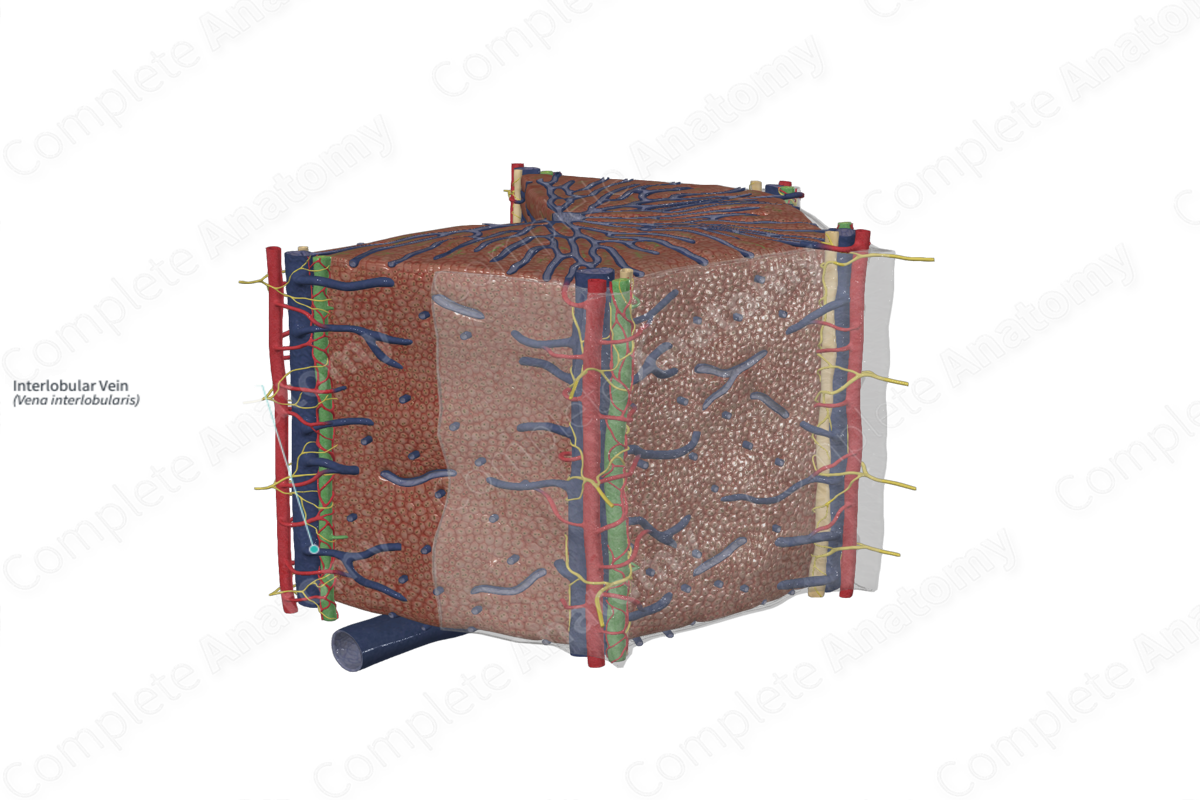
Quick Facts
The interlobular veins of liver are the veins that arise as tributaries of the hepatic portal veins between the hepatic lobules (Dorland, 2011).
Related parts of the anatomy
Structure/Morphology
The portal triad is the term given to the branches of the portal vein, hepatic artery, and bile duct that pass through the liver together. The term portal triad, however, is a misnomer, since lymphatic vessels and nerves also travel in this arrangement. The hepatic artery carries 25% of the total circulation to the liver, while the portal vein contributes to 75% of the total blood volume (Boron and Boulpaep, 2003). The blood of the hepatic artery is rich in oxygen as it has come directly from the celiac trunk of the abdominal aorta. The portal vein carries blood, not only rich in nutrients but also toxins, absorbed by the gastrointestinal tract.
The hepatic portal vein enters the liver at the porta hepatis, accompanied by the hepatic artery. The common bile duct and lymphatics exits the liver via the porta hepatis. The portal vein continues to bifurcate into segmental branches to each of the functional segments of the liver. Its terminal branches are the interlobular veins, which travel at the periphery of the hepatic lobule.
The interlobular veins are much larger than the accompanying interlobular arteries and are the largest vessel structure in the portal triad. The interlobular veins give rise to capillary branches that enter the liver lobule as sinusoids.
Anatomical Relations
The interlobular veins accompany the interlobular artery and the interlobular bile duct. These vessels run parallel to each other in the portal tracts and form the portal triad. They are also associated with lymphatic vessels and nerves.
Function
The interlobular veins carry nutrients and metabolites absorbed from the intestinal tract directly to the hepatic sinusoids. Additionally, they carry any toxins that have been absorbed. The interlobular veins also deliver blood cells from the spleen, and endocrine excretions from the pancreas and the gastrointestinal tract (Pawlina, 2016).
List of Clinical Correlates
- Veno-occlusive disease
References
Boron, W. F. and Boulpaep, E. L. (2003) Medical Physiology: A Cellular and Molecular Approach. W.B. Saunders.
Dorland, W. (2011) Dorland's Illustrated Medical Dictionary. 32nd edn. Philadelphia, USA: Elsevier Saunders.
Pawlina, W. 2016. Histology: A text and atlas with correlated cell and molecular biology. 7th ed. Philadelphia: Wolters Kluwer.
